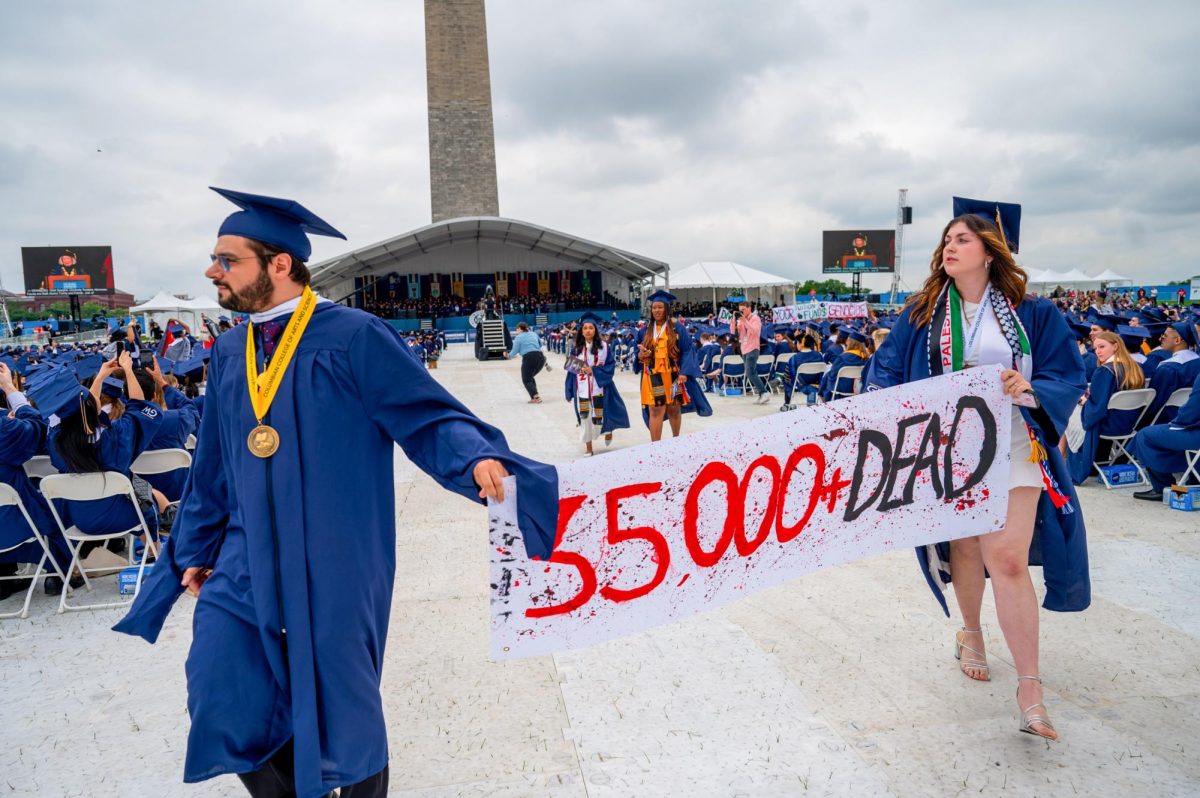Facing a still-bleak economic outlook, GW families are continuing to take out private loans at higher rates than many similar institutions.
About 45 percent of all loan debt held by GW students and their families in 2011 came from non-federal lenders, the highest and about 30 percent more than the proportion of private loan debt at 10 schools similar to GW, Associate Vice President of Financial Aid Dan Small said.
American University closely follows, with about 43 percent being non-federal. The national average was 20 percent.
The breakdown of student loans by federal and private lenders at GW has slightly fluctuated since the recession, when 46 percent of student loans came from companies. This year’s figures – $60.8 million in undergraduate loans, with $37.9 million in federal loans – is a 2 percent increase from last year’s loan breakdown.
Politicians and higher education leaders tend to snub private student load lenders – which have fewer regulations and repayment plans than federal loans – when addressing student loan debt.
But with many companies offering interest rates far lower than federal sources, the University’s top financial aid officer said he supports GW families’ decision to give them a chance.
Small said he continues to see financially savvy parents go the private route. Interest rates are 7.9 percent for federal PLUS loans, while private loans have variable rates as low as 2.25 percent from Sallie Mae – rates that Small said “will probably be at this loan rate for many years.”
And it is paying off for most students and parents, Small said, pointing to GW’s default rate of 1.2 percent. About 9.1 percent of students nationally defaulted on federal loans within two years, according to the most recent data available.
The average debt taken on by Class of 2011 graduates nationally continued to outpace past years, with a slight uptick in borrowing from 2011 GW graduates.
The average GW graduate’s debt reached $32,714 in 2011, about $200 more than the year before.
But Small said the figure is “misleading,” because it is not broken down by debt owed by students and debt owed by parents with students listed as co-borrowers. Few students are able to secure private loans on their own, Small said, especially after the lending industry came under fire during the financial crisis.
“We know the majority of the time, parents will be paying [these loans] back,” Small said.
Out of about $33,714, Small said parents hold about 43 percent in their name.
Private student loans now make up $150 billion of the $1 trillion in total outstanding student loan debt in the U.S., according to the first annual report from the Consumer Financial Protection Bureau’s student loan ombudsman.
The Oct. 16 report said private student loan borrowers complain they are “surprised by the terms and conditions of their loans, they are given the runaround by their loan servicer and they have few options to refinance or modify repayment for a better deal.” It also said the inability to negotiate with companies was preventing students from refinancing and getting lower rates of repayment.
Matthew Reed, program director at the Institute for College Access and Success, said GW had a “fairly high percentage” of nonfederal loan debt compared to other private schools. He said across the country, cost of attendance is the biggest factor for students taking out private loans.
Reed said he has seen signs that the private loan market is expanding again as companies extend their lending pools and “college costs continue to rise faster than income and available grant aid.”
“We’ve been saying for years that they are quite risky. They lack consumer protections like federal loans – you can’t get income-based repayment, in case when you graduate you have trouble finding a job or are not earning as much as you think,” Reed said.
Students attending private for-profit colleges are most likely to take out the riskier loans, with a default rate that is nearly double the national average.
When the financial aid office revamps its web presence this fall, Small said it will add a page about the net price of attendance – factoring in aid awards – and student loans. He said the office hopes to add the information, which will also be available on the admissions office website, by next fall, amid an increased push for higher education cost transparency.
Small said the University began tracking cost of attendance in 2006.
Loan giants like Sallie Mae and Citibank – two of the primary providers of private loans for GW students – have been targets of federal regulation. Piled under mounting debt, students are blaming the companies for keeping regulations under wraps while they allowed students to rack up more debt.






